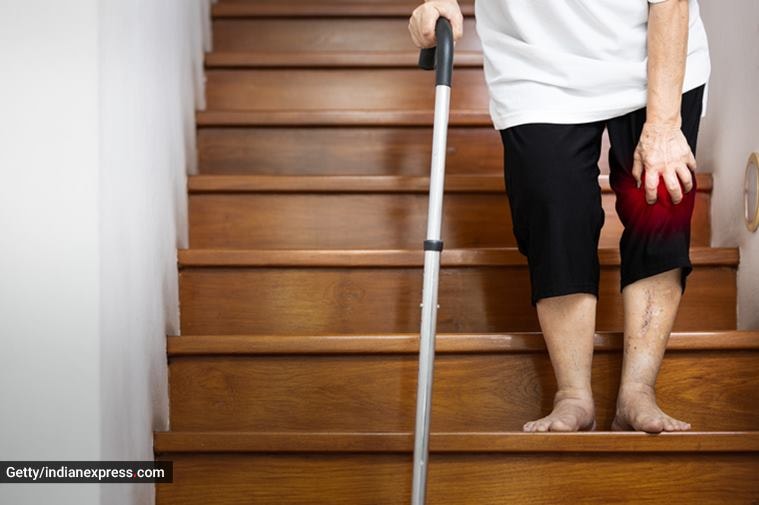Knee osteoarthritis or knee joint pain is a non-inflammatory, degenerative joint disease that causes progressive loss of articular cartilage. “Cartilage is a strong, flexible tissue that helps avoid injury by preventing the bones from rubbing against one another,” said Dr Vivek Loomba, Consultant Pain Physician at the Indian Spinal Injuries Centre, New Delhi, adding that as the cartilage degrades and the bones rub against one another, it may lead to knee osteoarthritis. “It is one of the most common reasons for knee pain and disability in older adults,” he told indianexpress.com
Buy Now | Our best subscription plan now has a special price
Who is at risk?
Osteoarthritis of the knee is more common in “women than in lazy”. “Some other factors that can contribute to the condition of the knee include advanced age, being overweight or obese, previous knee injuries or surgery, and certain jobs that require constant knee bending,” he shared.
Symptoms
The primary symptom of knee osteoarthritis is pain. In addition to pain, patients may have swellingknee stiffness, function-limiting knee discomfort, loss of flexibility, pain while resting or at night, cracking or grinding noise while moving their knee, and impact on walking distances.
How is osteoarthritis of the knee diagnosed?
In addition to a complete medical history and physical examination, the patients may require further tests like:
*Blood tests
*X-Ray
*Arthrocentesis: A clinical procedure that is performed using a sterile needle, to obtain synovial fluid to determine the cause of arthritis.
*Arthroscopy: A surgical method where a camera is inserted into the affected joint to obtain visual data of the deterioration caused to the joint because of OA
MRI (magnetic resonance imaging)
According to Dr Loomba, “Knee osteoarthritis develops slowly over years, interfering with daily activities and the ability to work. So, efforts should be made to stop the condition from getting worse by seeking early treatment.”
 Patients may have swelling, knee stiffness, function-limiting knee discomfort, loss of flexibility in osteoarthritis (Source: Getty Images/Thinkstock)
Patients may have swelling, knee stiffness, function-limiting knee discomfort, loss of flexibility in osteoarthritis (Source: Getty Images/Thinkstock)
Can it be managed without surgery?
Most people suffering from knee osteoarthritis fear that they might have to undergo surgery to get relief from the pain and discomfort. However, there are several pain management options that can help in relieving the pain. As per Dr Loomba, various strategies for management of the condition include:
Non-pharmacological
exercise like walking, cyclingisometric and isotonic knee exercises.
Weight Reduction: Even a slight decrease in weight, by 2-5 kg, will help in decreasing the pain and degeneration of the knee joint.
Aquatic (water based) therapies.
Pharmacological
Medications like acetaminophen, NSAIDS like ibuprofen or etoshine, local NSAIDS like Volini gel are used as first line management.
If the pain persists, weak opioids like tramadol (ultracet) can be prescribed.
In severe cases, stronger opioids like morphine can be added to the treatment regimen.
Intra-articular knee joint injections – This includes corticosteroid and/or hyaluronidase injections administered into the knee joint. The corticosteroid helps in decreasing inflammation while hyaluronidase provides lubrication.
Radiofrequency ablation: The radiofrequency ablation of the nerves supplying the knee joint is reserved for refractory cases, and may provide pain relief for up to 1 year. This procedure may serve as a boon for patients who are unfit or do not want to undergo knee replacement surgery.
️ For more lifestyle news, follow us on Instagram | Twitter | Facebook and don’t miss out on the latest updates!